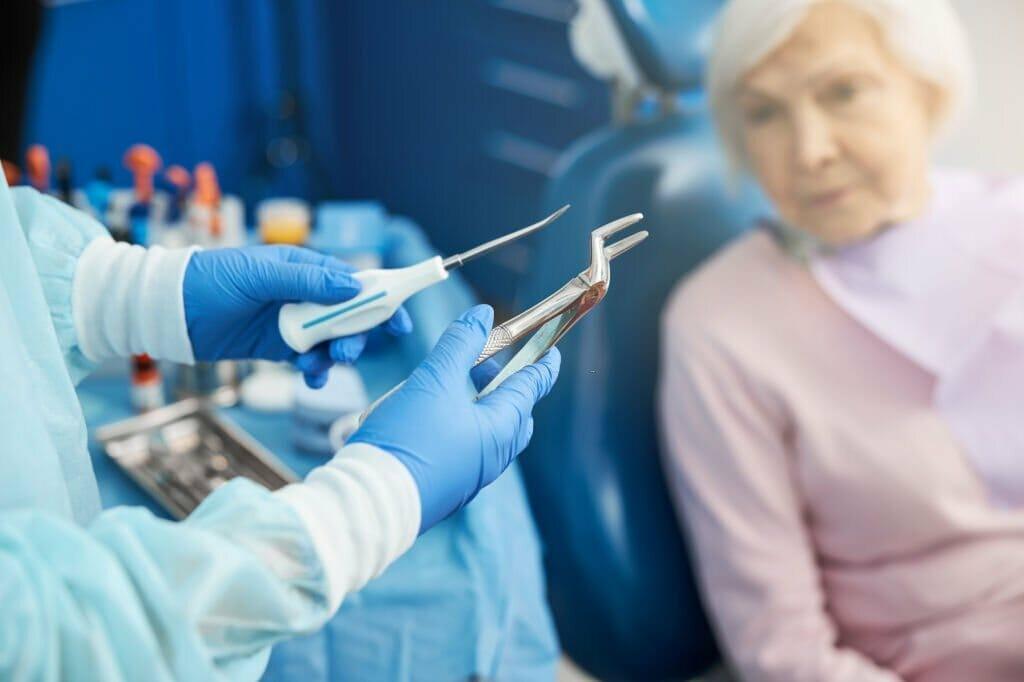Welcome to the comprehensive guide on dental elevators! If you’re a dentistry student or a dental practitioner, you’re going through the perfect piece of writing!
A tooth elevator is an essential tool used by dentists to gently luxate and elevate teeth with precision and minimal discomfort. In this blog, we will understand the elevator dental tool, exploring the techniques employed by dental professionals to perform extractions efficiently.
We will also discuss how these instruments contribute to a painless extraction process, ensuring your comfort throughout the procedure. Let’s get started!
How Dental Elevators Work?
Tooth elevators are crucial instruments that facilitate dental extraction procedures. Their primary function is to gently and effectively loosen the tooth from its socket, allowing for a smooth extraction process. Let’s delve into the step-by-step guide to understand how these dental instruments work.
Step-by-step guide to using tooth elevators:
The first step in the extraction process involves the administration of local anesthesia to numb the area.
Once the patient is comfortable, the dentist selects the appropriate dental elevator for the specific tooth to extract. Dental elevators come in various shapes and sizes, each for different types of teeth and extraction techniques.
The dentist positions the instrument against the tooth’s root surface. Applying controlled and gentle pressure, they create small, rotational movements.
This motion helps to expand the socket and gradually loosen the tooth from its ligaments.
The dentist continues the rotational movements, ensuring an even distribution of force around the tooth’s circumference. This technique prevents excessive strain on any one area, reducing the risk of fractures or damage to the surrounding structures.
Forces used to loosen teeth:
The dental elevator utilizes three main forces to loosen teeth: elevating, rotating, and luxating forces.
Elevating force: This force is applied vertically, helping to lift the tooth out of the socket. It gradually separates the tooth from the surrounding bone.
Rotating force: By applying rotational movements, the dental elevator helps to widen the socket and disengage the tooth’s roots from the ligaments.
Luxating force: Luxation involves applying controlled lateral movements to loosen the tooth from its attachments. This force helps to further dislodge the tooth and ease its removal.
Preventing damage to surrounding teeth and gums:
Dental professionals take utmost care to minimize damage to neighboring teeth and gums while using dental elevators.
Here are a few preventive measures they take:
Proper positioning
Dentists position the elevator dental tool precisely against the targeted tooth. This ensures that the force is applied directly to the tooth being extracted rather than nearby teeth.
Controlled force application
Dentists exercise caution and use controlled force to avoid excessive pressure or sudden jerks that could harm surrounding teeth or gums.
Protective barriers
In some cases, dentists may place protective barriers, such as rubber dams or retractors. This helps shield nearby teeth and soft tissues from accidental contact.
Constant evaluation
Throughout the extraction process, dentists constantly assess the tooth’s mobility and the response of surrounding structures to ensure that damage is minimized.
Pain and Complications
Pain and discomfort are common concerns when it comes to using dental elevators during tooth extractions.
Let’s learn the ways to minimize pain during an extraction, discuss potential complications that may arise, and provide essential tips on caring after the procedure.
Minimizing pain during tooth extraction:
Dentists adopt various techniques to ensure a comfortable experience during extractions. These include:
Local anesthesia
Before starting the extraction, your dentist will administer local anesthesia to numb the area around the tooth. This ensures that you won’t feel pain during the procedure.
Sedation options
Depending on the complexity of the extraction or your level of anxiety, your dentist may offer sedation options such as nitrous oxide to help you relax during the procedure.
Proper technique and instruments
Experienced dentists use appropriate dental elevators and forceps, employing gentle and precise movements to minimize trauma to the surrounding tissues.
Possible complications of dental extraction:
Although dental extractions are generally safe, complications can occur. It’s essential to be aware of these potential issues:
Dry socket
This occurs when the blood clot that forms in the extraction site is dislodged or dissolves prematurely. It can lead to intense pain and delay healing. So proper aftercare is crucial in preventing dry sockets.
Infection
Infection may develop if bacteria enter the extraction site. Dentists prescribe antibiotics when necessary and provide guidelines for maintaining oral hygiene to minimize the risk of infection.
Bleeding
Some bleeding is normal after an extraction, but excessive or prolonged bleeding should be reported to your dentist. Applying gentle pressure with clean gauze can help control bleeding.
Nerve damage
In rare cases, nearby nerves can be affected while using the tooth elevator, leading to temporary or permanent numbness or altered sensation. Dentists exercise caution to minimize this risk.
Final Insights!
In dentistry, extraction is the most common procedure, and the dental elevator is the most common instrument.
So this procedure can be performed with minimal pain and complications when dental elevators are used with proper techniques. Dentists should have proper elevator dental tool for each specific tooth extraction.
Moreover, these instruments should be of high quality, such as those manufactured by GerDentUSA. They have a wide variety of dental surgical instruments and offer customization options. You can visit and explore their catalog and get what you need for your dental practice.
